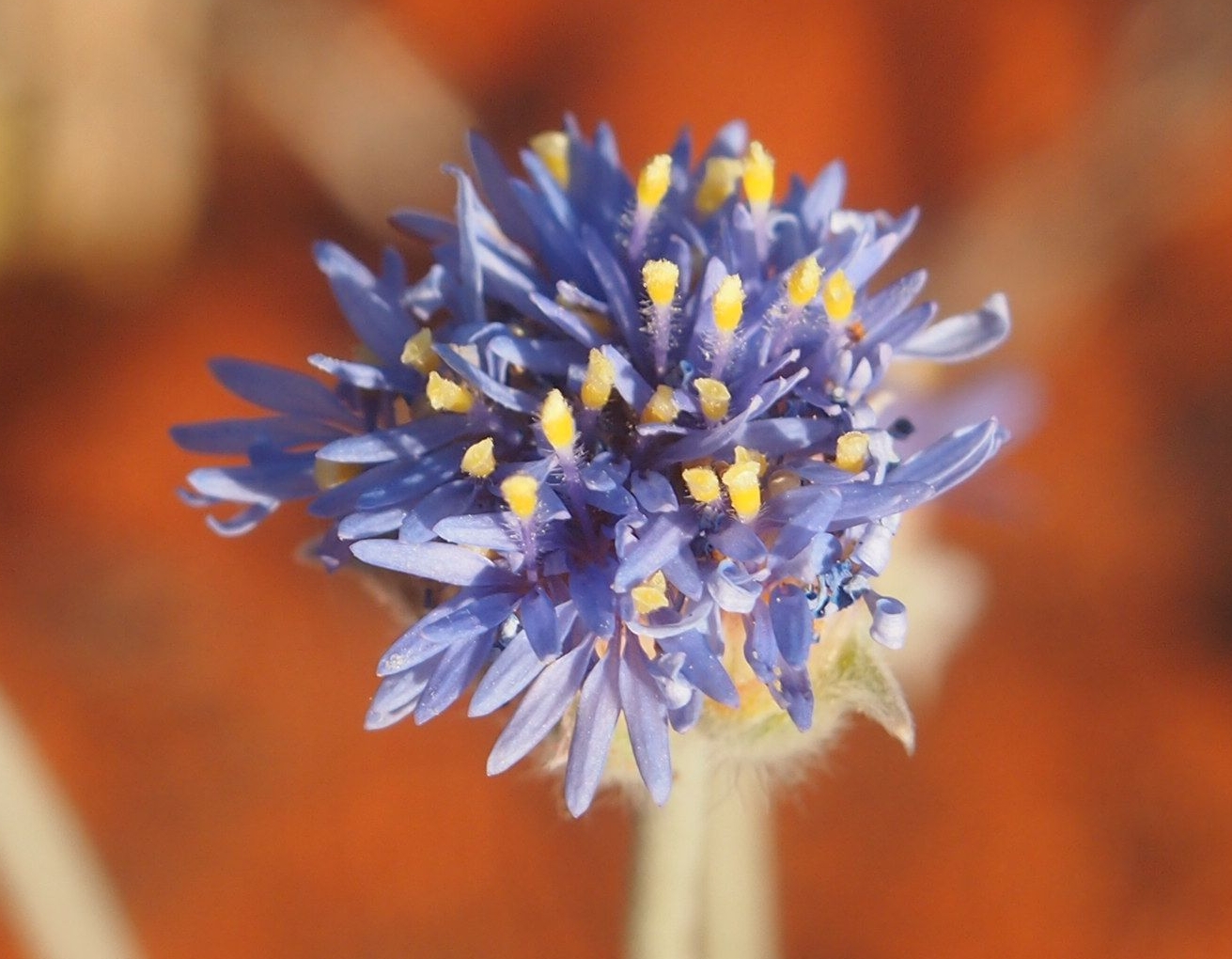Brunoniaceae on:
[Wikipedia]
[Google]
[Amazon]
 ''Brunonia australis'', commonly known as the blue pincushion or native cornflower, is a
''Brunonia australis'', commonly known as the blue pincushion or native cornflower, is a
Brunoniaceae
i
L. Watson and M.J. Dallwitz (1992 onwards). The families of flowering plants: descriptions, illustrations, identification, information retrieval.
https://web.archive.org/web/20070103200438/http://delta-intkey.com/ {{- Goodeniaceae Flora of New South Wales Flora of the Northern Territory Flora of Queensland Flora of South Australia Flora of Tasmania Flora of Victoria (Australia) Asterales of Australia Eudicots of Western Australia Monotypic Asterales genera Taxa named by James Edward Smith
 ''Brunonia australis'', commonly known as the blue pincushion or native cornflower, is a
''Brunonia australis'', commonly known as the blue pincushion or native cornflower, is a perennial
A perennial plant or simply perennial is a plant that lives more than two years. The term ('' per-'' + '' -ennial'', "through the years") is often used to differentiate a plant from shorter-lived annuals and biennials. The term is also widel ...
or annual
Annual may refer to:
*Annual publication, periodical publications appearing regularly once per year
** Yearbook
** Literary annual
*Annual plant
*Annual report
*Annual giving
*Annual, Morocco, a settlement in northeastern Morocco
*Annuals (band), ...
herb
In general use, herbs are a widely distributed and widespread group of plants, excluding vegetables and other plants consumed for macronutrients, with savory or aromatic properties that are used for flavoring and garnishing food, for medicina ...
that grows widely across Australia
Australia, officially the Commonwealth of Australia, is a sovereign country comprising the mainland of the Australian continent, the island of Tasmania, and numerous smaller islands. With an area of , Australia is the largest country by ...
. It is found in woodlands, open forest and sand plains. In Cronquist's classification scheme it was the sole member of the monogeneric plant family Brunoniaceae. The APG II system moved it into Goodeniaceae, with which it shares the stylar pollen-cup, or indusium, a character confined to these taxa. ''Brunonia'' is unique among Goodeniaceae in its radially symmetric flowers, the superior ovary and the absence of endosperm in the seeds.
The leaves are about 10 cm long and form a basal rosette. Flowering is usually in spring, with dense hemispherical clusters of numerous, small, bright blue flowers developing on several stems (scapes
Parsons School of Design, known colloquially as Parsons, is a private art and design college located in the Greenwich Village neighborhood of New York City. Founded in 1896 after a group of progressive artists broke away from established Manhatta ...
) up to 50 cm in height.
Taxonomy
Specimens of ''Brunonia'' were first collected by Robert Brown during the 1801–02 voyage of HMS ''Investigator'' under the command ofMatthew Flinders
Captain Matthew Flinders (16 March 1774 – 19 July 1814) was a British navigator and cartographer who led the first inshore circumnavigation of mainland Australia, then called New Holland. He is also credited as being the first person to ut ...
. The genus had not been published by early 1810, when members of the Linnean Society of London
The Linnean Society of London is a learned society dedicated to the study and dissemination of information concerning natural history, evolution, and taxonomy. It possesses several important biological specimen, manuscript and literature coll ...
sought to name a plant genus in Brown's honour. This genus was settled upon because it was so difficult to classify: "The genus under consideration is... exceedingly interesting, on account of its apparent relationship to several very different natural orders, and the great difficulty of referring it to any one in particular." The name ''Brunonia'' was chosen because a genus had already been named ''Brownea'' in honour of Patrick Browne, and ''Brunonia'' was seen as a compromise, "preserving as much resemblance to his name as possible, while I avoid all ambiguity with the Brownea previously established."
In February 1810, James Edward Smith read a formal description of ''Brunonia'' to the Linnean Society. Two species were given: ''Brunonia australis'' and ''Brunonia sericea''. Later that year, Brown made use of Smith's names in his '' Prodromus florae Novae Hollandiae''. However, Smith's speech did not go to print until 1811, so priority of publication of the genus belongs to Brown not Smith. Thus Brown unwittingly violated a virtual botanical taboo, by naming a genus after himself.
''B. sericea'' was reduced to a variety of ''B. australis'' in 1907, and given synonymy with ''B. australis'' in 1992. A number of other species and variety have been published, but to date none have survived as current taxa except ''B. australis''.
Cultivation
This plant is easy to propagate from seed or by dividing existing plants. However, they can be difficult to establish and may die after a few years. They should be grown in well-drained soils either in full sun or partial shade.References
External links
* *Brunoniaceae
i
L. Watson and M.J. Dallwitz (1992 onwards). The families of flowering plants: descriptions, illustrations, identification, information retrieval.
https://web.archive.org/web/20070103200438/http://delta-intkey.com/ {{- Goodeniaceae Flora of New South Wales Flora of the Northern Territory Flora of Queensland Flora of South Australia Flora of Tasmania Flora of Victoria (Australia) Asterales of Australia Eudicots of Western Australia Monotypic Asterales genera Taxa named by James Edward Smith